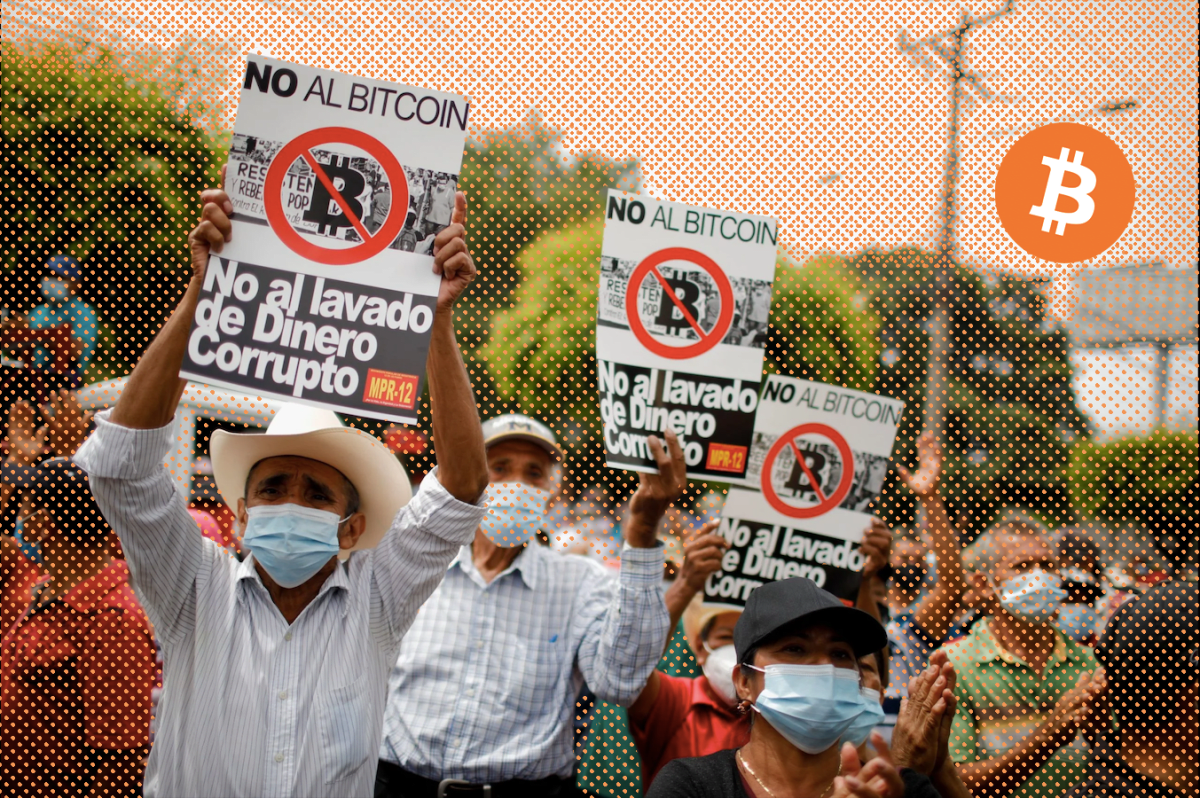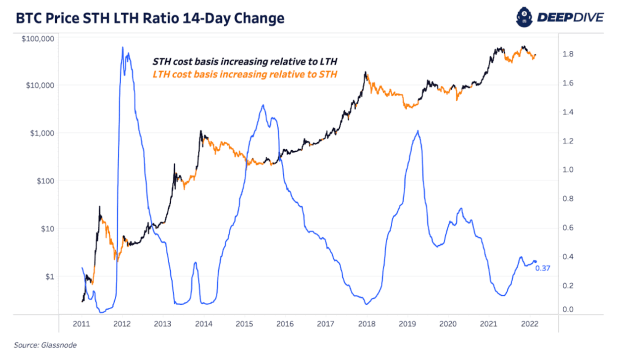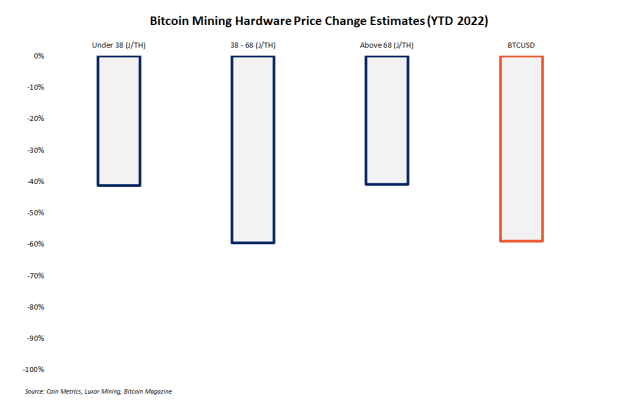Nassim Taleb, Bitcoin And The Law Of Large Numbers
Speculation that bitcoin will become a widely-used global currency seems to be a better bet now than ever before.
Nassim Taleb, famous for writing “The Black Swan,” and equally for his mathematical work in trading, was once a Bitcoiner. Recently, he has sold his bitcoin, explaining that it is not today what it should be as far as a stable, usable asset. I agree with him.
To date, bitcoin has not fulfilled its potential as a currency being used far and wide around the world. But that does not mean it isn’t on a journey to reach that point, one that appears much more promising today than at any other time in the asset’s history.
The Journey To Becoming A Useable Asset
For most of the last three years, I have questioned whether bitcoin would actually live up to its use case as peer-to-peer, borderless electronic money. Many of us remember the last six months of 2017, when wild speculators artificially drove up the price of bitcoin in a bout of irrational exuberance, only for bitcoin to start a deep decline that maintained over the next year.
This led to a “digital gold” marketing campaign by Bitcoiners, which I always hated. The call for bitcoin being a “store of value” furthered a narrative that it was not useful for anything else, and jaded my thinking. Had bitcoin simply become a truly speculative instrument with no real inherent value, outside of schillers driving the price up to sell to some sucker who came in later? Was this an elaborate Ponzi scheme where early buyers sell to the next cohort, which is forced to go to Twitter to try to drive prices up again so they can sell at an even higher price?
I wrote about what I thought Bitcoin should be as a usable asset a few years ago, and my disappointment that it was not becoming that. My arguments sounded vaguely familiar to Taleb’s. However, I continued to hold my bitcoin because, despite the fact that I had become a bit disenfranchised, I believed the price would continue to go up, at least to some degree, although at some point in the future, a new blockchain that could securely move global payments at a reasonable price could debut. (Many people believe that Ethereum is the answer, but if you understand how gas prices work, you will quickly see that the cost is too high for it to be efficient, even though it is faster.)
At the beginning of 2020, my mind started to change again on where Bitcoin was going. I was at a conference called “Satoshi Roundtable,” chatting with a few friends who I see there every year. The subjects that continually came up were: One, rehypothecation of bitcoin and its danger; Two, security; And three, use cases of bitcoin.
One of my friends had gone to South America to investigate whether the stories of frequent use cases down there were indeed true. The feedback was “not yet” and “not as much as you think.” This only furthered my suspicion that there is not enough price stability for many people to use bitcoin. Though a few people leaving certain countries to rebuild their futures in Florida were using bitcoin as a way to transport their wealth — though this was not enough practical usage to justify the hype that this bitcoin use case had been receiving.
Typically, low adoption news like this would further have me doubt bitcoin’s use case, but it actually turned me the other way, given my contrarian nature. I concluded that a little use is better than none, and that bitcoin would have to go through a speculative phase to grow to the size it would need to become more useful. Also, you have to apply the law of large numbers to bitcoin to get to a market cap at which the volatility begins to dissipate.
The Law Of Large Numbers
Jakob Bernoulli first proved this theorem regarding large numbers, which many of us know from our studies of statistics. Bernoulli asserted that a small sample size will have a degree of difference from the overall population of study, and as you add more samples to the sample size, the relationship to the broader population converges until the sample is the population.
The trick in statistical samples is to understand how large the sample has to be in order to track the population within a reasonable margin. The law of large numbers is also applied to economics. In this case, the larger a company gets, the more units it has to produce in order to continue percentage growths.
In my discipline, I often applied this to country GDP. Smaller countries have to produce less than larger countries to match their GDP growth in percentage terms. Bitcoin is no different. The larger it grows, the less volatile it will become, as it takes much more dollar notional value buys and sells to move the price in percentage terms. In other words, as the bitcoin market cap increases, percentage movements in either direction will become much less, as it will take increasingly more capital and momentum to move the price. For example, when bitcoin was at $10,000, a move to $5,000 was possible, and represented a 50 percent price change. With bitcoin at $50,000, a $5,000 price move to $45,000 is very likely, but this represents only a 10 percent price change at this level.
As bitcoin’s market cap increases, the law of large numbers dictates that it will be increasingly difficult to move the price, tampering volatility and reducing the potential for price manipulation.
Bitcoin’s Phases Of Adoption
In order for bitcoin to be useful as a digital currency, the market cap must continue to grow. At first, bitcoin was novel, magic internet money. Money for developers. In the early days, I thought the best use case for bitcoin was to transact across borders for developers working on projects together.
Pre-Satoshi’s white paper, I worked at Electronic Arts for a couple of years, and it had studios and third-party dev shops all around the world. It was convenient to work on projects across several time zones and to solve localization issues, but it was inconvenient to send money. Bitcoin solved that problem, but bitcoin used to be too complicated for anyone but a developer to store and transact. As other financial services people started getting into bitcoin and exchanges started to pop up, all of that began to change. We began to speculate on the promise of a digital currency, and with that speculation, along came financial speculators.
In late 2016 and 2017, we began to see a gold rush in bitcoin and other cryptocurrencies, including many scam coins. At conferences and Bitcoin meetups, new characters entered: gold brokers, get-rich-quick scammers, former financial services professionals who were not allowed to transact in securities anymore, people who had been to prison — the list goes on.
They saw cryptocurrencies as a fast cash opportunity and pushed the market beyond its limit in late 2017. It didn’t end well for many, and the next three years were spent recovering, building and regaining legitimacy.
We are still in a speculative stage, but a much more measured one than four years ago. But a speculative stage is needed to grow the market cap to a size where broader transactions become possible. What are we speculating on? That bitcoin will be a broadly-adopted global currency. And this is no different than any other forex investment. But instead of speculation on a country’s GDP growth and economic development making its currency stronger, bitcoin speculation is the bet that the digital economy will grow without the need for financial intermediaries, across borders, and that central bank-based currencies will devalue.
I am making the bet that all of this will happen, and that it is happening rapidly.
As speculation gives to promise, bitcoin makes way for more real-world use. As I write this, bitcoin’s market cap is now $1 trillion, versus $200 billion a year ago.
In 2021, more companies that transact digitally will hold bitcoin on their balance sheets; no differently than a global company holding a certain amount of foreign currency reserves. When the first large company, MicroStrategy, made this play it was big news. Its market cap was only $1 billion, though. Next was Tesla, with a market cap of $670 billion. As more companies make this announcement, the news will have an increasingly smaller effect, with lower market cap companies not having much of an affect on bitcoin price. This is the law of large nmbers.
Future Use
After bitcoin gets to the $500,000 price range, I believe we will begin to see more transactions and daily use. Projects are already built that allow multiple-transaction use cases. BAKKT, Coinbase and Gemini have wallets that allow you to send bitcoin and other cryptocurrencies between friends (like with Venmo) and to merchants. Tesla will accept bitcoin as payment for cars. Paydrop and Wyre allow payments to W-2 and contract workers in bitcoin.
What is preventing mass use of these tools today and transacting more in bitcoin?
This story about cotton might provide some answers.

This is a guest post by Steven McClurg. Opinions expressed are entirely their own and do not necessarily reflect those of BTC Inc or Bitcoin Magazine.









